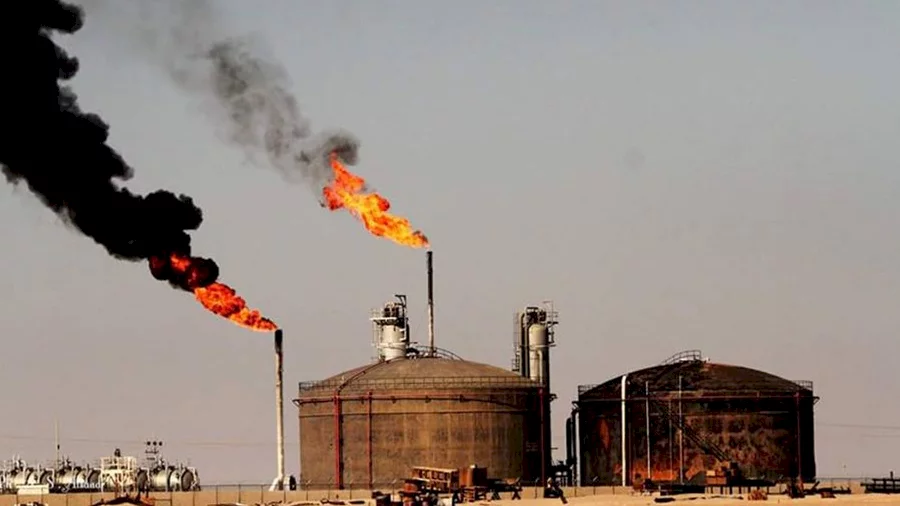
Natural Gas Liquids Stockpile Disruption Upsets Oil Market Balance
SadaNews - Increasing U.S. inventories of natural gas liquids are complicating the global oil surplus landscape, as these inventories reached 309 million barrels, the highest level recorded for this time of year, according to data from the U.S. Energy Information Administration.
This sharp increase indicates deep shifts in the oil market balance, as natural gas liquids (which include propane, butane, and ethane) are often included in global oil supply and demand equations, alongside crude oil and refined fuels. However, their effect on benchmark crude oil prices remains limited, complicating market observers’ task of interpreting current price trends.
According to estimates from the International Energy Agency, global oil supplies will continue to rise, with around one-fifth of this increase coming from natural gas liquids, adding an additional layer of complexity to the global market structure.
These products, which are considered a cornerstone in industries such as heating and petrochemicals, are often treated as part of the traditional oil market, making a precise understanding of market equilibrium equations more complex and raising questions about the accuracy of some indicators that investors and analysts rely on to assess price movements and make their decisions.
However, while these additional barrels contribute to the overall oil quantities, their impact on benchmark crude prices remains limited since these prices are determined by trading at a handful of key global centers. This disparity between supply volumes and pricing presents significant challenges for those trying to accurately gauge market pulse.
Torell Bossuni, Head of Oil Markets at the "International Energy Agency", stated that "natural gas liquids have dominated supply and demand growth since the COVID-19 pandemic," adding that "their quantities are indeed massive and often underappreciated by many market observers."
Expectations of Oil Market Overproduction
This obstacle emerges at a time when Brent crude, the global benchmark, is poised to record its third consecutive annual decline, with experts predicting that the global oil market could enter a phase of surplus supply. The "International Energy Agency" in Paris estimates that the world will experience an unprecedented surplus next year.
"Citi Group" estimates that the jump in natural gas liquids inventories was the second-largest driver of the expansion of global onshore oil inventories this year, following China’s intensive crude purchases.
The "International Energy Agency" estimates that global oil supplies will rise by about 2.4 million barrels per day by 2026, with approximately one-fifth of this increase coming from natural gas liquids.
America is the Largest Producer of Gas Liquids
Natural gas liquids, which include "propane", "butane", and "ethane", along with crude oil and natural gas, are often used for heating, cooking, and plastic manufacturing. Sometimes, it is difficult to accurately account for these barrels due to their dual sourcing.
A significant part of the surge in natural gas liquids supplies came from the broader shift in U.S. shale oil regions, where natural gas production has become more favored.
The United States alone currently produces more than 7.5 million barrels per day of natural gas liquids, a quantity sufficient to make it the fourth-largest oil producer in the world if counted separately.
This supports the efforts of the Trump administration to export American energy, including to China, which has consumed large amounts of U.S. supplies of these types of fuels in past years.
Jafurah Boosts Saudi Arabia’s Gas Liquids Production
Further increases in global natural gas liquids production will come with the start of production in Saudi Arabia’s massive Jafurah gas project, expected to launch by the end of the year.
Global interest in gas is increasing, given its potential use in generating electricity needed to power AI-dependent data centers. Europe is also seeking to secure supplies that do not come from Russia.
The U.S. Energy Information Administration expects U.S. natural gas liquids production to grow between 2023 and 2026 at nearly double the rate of crude oil production growth in terms of volume.
Crude Production May Stabilize but Associated Gas Production Will Rise
Don Baldridge, Executive Vice President for Transportation, Midstream, and Chemicals at "Phillips 66", pointed out that one of the main growth drivers is U.S. shale oil wells that are producing more gas. The company operates a pipeline network that transports about one million barrels per day of natural gas liquids in the U.S., exporting about one-third of this quantity.
Baldridge added, "There is more gas per barrel of oil. Even if crude production remains stable in terms of quantity, the pace of natural gas liquids production growth will remain strong."
Although the pace of growth in U.S. crude production has slowed since the peak of the shale oil boom, production remains close to record levels, and current wells are producing significantly more gas per barrel than before.
New Export Capacities Reshaping the Oil Market
"East Daley Analytics" estimates that about 1.4 million barrels per day of new export capacities for "ethane" and liquefied petroleum gas will enter the market by the first half of 2028, highlighting the potential scale of supply expansion.
Julian Renton, an analyst at "East Daley", stated that more than one-third of total liquid fuel inventories in the United States can now be linked to natural gas liquids, in a structural transformation occurring in the market.
Renton added, "In the long term, this will have a greater impact," explaining: "Our forecasts for crude production in the Permian Basin are relatively stable, but we still expect continuous growth in natural gas liquids quantities in the region."

Natural Gas Liquids Stockpile Disruption Upsets Oil Market Balance

Egypt aims to increase its oil production by 11.5% during the upcoming fiscal year

Rising Prices of Aluminum, Copper, and Most Industrial Metals Amid Optimism for Ending Gov...

Gold prices rise again as U.S. consumer confidence index drops

Asian Stocks Rise Amid Hopes for a Deal to End the U.S. Government Shutdown

محافظ مصرف سوريا المركزي: هناك رغبة أمريكية كبيرة بالاستثمار في سوريا

Gold Surges to $4,053 an Ounce Amid Disappointing Data
